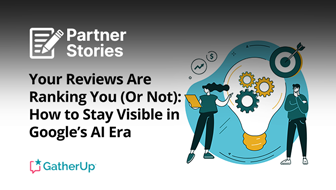Decision-makers at brands and agencies know that the new AI-generated holiday ads from Coca-Cola have attracted a lot of criticism.
Others have described the three new AI versions of the classic “Holidays Are Coming” campaign as “a soulless and creepy, dystopian nightmare” and “the biggest branding blunder of the year,” with others saying the AI campaign “destroyed the spirit of Christmas” and “earns Coca-Cola a lump of coal.”
Strong words. But has Manuel “Manolo” Arroyo, the executive vice president and global chief marketing officer for the company, just made a career-damaging move?
In testing for festive campaigns globally by DAIVID, none of Coke’s new AI-generated holiday ads made the top 30 most effective holiday campaigns of 2024 against 90 other Christmas ads.
Watch the new AI-generated holiday ads, which were created by three different ad agencies, and form your own opinion.
Secret Santa
Secret Level created “Coca-Cola – Secret Santa (AI-Generated Christmas Ad 2024).”
Holidays Are Coming
Silverside created “Coca Cola – Holidays Are Coming.”
Unexpected Santa
Wildcard created “Coca-Cola – Unexpected Santa (AI-Generated Christmas Ad 2024).”
Holidays Are Coming 2020
While you’re reviewing these new versions, you should also watch the version that was uploaded to Coca-Cola Great Britain & Ireland’s YouTube channel back in 2020.
How Do Coke’s New AI Versions Compare To The Classic 2020 Ad?
What do you notice? What do you wonder?
Attention
All the new AI versions generated above-average attention from the start.
However, the classic version, which starts with a boy ringing a bell, captures more attention than any of the AI versions, which mostly start with shots of snowy landscapes.
People will generally attract more attention than images of trees and lakes.
Prevalence Of Intense Emotions
According to testing by DAIVID, none of the AI ads generate the same levels of intense positive emotions as the 2020 version, and all of them are below the industry average.
The 2020 version generates almost twice as much warmth as the norm, while the AI versions are level or slightly above.
The AI version that generated the most warmth was still 38% less likely to make people feel warmth than the 2020 version.
The AI versions were less relatable and less – for want of a better word – real.
Brand Recall
All of the new AI versions predictably scored above the industry average for correct brand recall.
This is not surprising, considering that people know the ad well, and the brand is present throughout and integral to the storyline (Coke Trucks).
The classic scores higher than the AI versions, though. This, again, is possibly due to the familiarity of the ad, but also the fact the famous “Holidays Are Coming” track kicks in much quicker.
Next Step Intents
One of the emotions that the AI versions consistently scored higher than the 2020 ad for is feelings of craving. All are around two to three times higher than average.
This is probably due to the close-ups of someone opening a cold bottle of Coke, which wasn’t included in the 2020 version.
What Was The Most Effective AI Version?
Ian Forrester of DAIVID reported:
“The AI versions of Coke’s classic ‘Holidays Are Coming’ campaign were strong for attention in the first second and brand recall, but were let down by their evocation of intense positive emotions, which were all below the industry norm.
The difference between the AI and the original was most stark in their evocation of warmth, a mainstay of Christmas advertising. The original evoked intense warmth among 33.0% of viewers, whereas the AI versions were significantly below this.
So, while the AI is producing images which on the face of it seem cute and heart-warming, the human viewer to some degree discerns their synthetic nature, which detracts from their impact.”
How Can Brands Avoid AI Negative Backlash?
After analyzing the data published by DAIVID, I reached out directly and spoke to their Chief Growth Officer, Barney Worfolk-Smith:
GJ: Why does AI have such a negative perception?
BWS: It’s not surprising that the use of generative AI, especially jazzing up familiar Christmas traditions like Coke’s truck, garners some negative opinions.
As the introduction of generative AI into processes is nascent and messy at best, none of us really know exactly how it will play out.
So, some in the advertising community who feel a sense of ominous threat will instantly adopt a negative stance. I don’t blame them, but the reality is, the toothpaste is out of the tube, so we should all have a hand on the wheel of a human-AI hybrid Christmas Coke truck to have a stake in the future.
GJ: Can brands navigate carefully to avoid backlash?
BWS: Generative AI is present – or at least coming down the chimney – in almost all aspects of advertising. It’s actually incumbent upon brands to try bits of it out.
Sure, it’s going to be bumpy, but the backlashes will frequently be confined to the advertising community.
As a result, as long as they’re doing measured introductory human AI experiments and not dismissing the agency of record, I think they’ll avoid a hit on the share price.
GJ: Why was the original video such a classic?
BWS: The original was a glorious confluence: strong, familiar emotions, which Coca-Cola evokes generally, the shared history of Santa and Coca-Cola’s colors, and a palpable, relatable sense of anticipation that even the “Grinchiest” of us feel in the run-up to Christmas.
GJ: Why has AI failed to replicate the success of the first campaign?
BWS: At DAIVID, we understand the importance emotions play in advertising effectiveness – and the AI versions all garnered below-average U.S. positive emotional responses.
Without a doubt, the uncanny valley plays a part here, especially with an advert that is so recognizable to so many of us.
GJ: What must marketers do when using AI in video or images?
BWS: Marketers need to take their eyes off the spreadsheet and on to the creative process.
Of course, AI can drive efficiencies, but it can also open up new avenues of creativity, and that will happen when creatives are empowered to use AI, not be threatened with it.
Embrace AI Cautiously In Holiday Ads
Holiday ads are notoriously tricky to navigate and strike the right sentiment, with the best intention often missing the mark.
Feelings of warmth and nostalgia are at the heart of the festive season. Perhaps AI just can’t replicate the nuance of human emotion – or, more likely, humans don’t like the idea of AI trying to replicate that.
Coca-Cola’s new ads emphasize the challenge for brands to cultivate emotional authenticity when engaging with their audience as AI becomes more integrated into advertising campaigns.
They remind us to embrace AI cautiously while upholding the human elements that underpin marketing campaigns – holiday ads, in particular.
Methodology
DAIVID used its AI-powered platform that predicts the emotions an ad will generate, and its likely impact on brand and business metrics – enabling advertisers to measure the effectiveness of their ad campaigns at scale.
They tested 90 Christmas ads for 39 different emotions. The strength of emotions people feel is ranked from 1-10, with 8-10 considered “intense.” Data for the chart was compiled at 7:00 AM on November 15, 2024.
More resources:
- 10 Top Advertising Campaigns & Why They Work
- The Best 5 Super Bowl Ads in 2024 (Brands That Got It Right)
- A Complete Guide To Holiday Marketing
Featured Image: Evgeny Karandaev/Shutterstock





